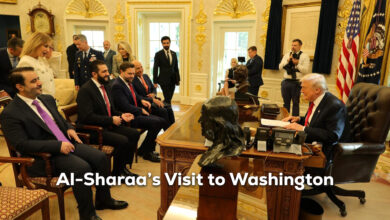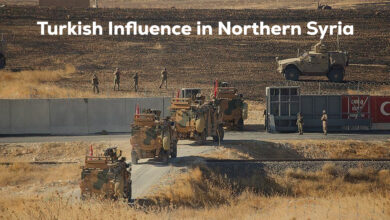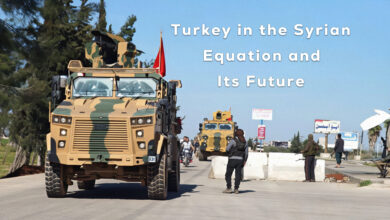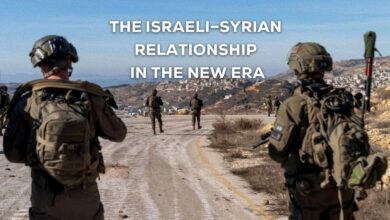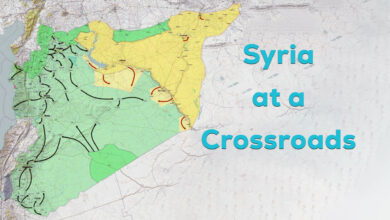
The Kremlin announced Vladimir Putin’s visit to Iran on July 19. Indeed, the visit took place as scheduled. Putin met with Turkish President Recep Tayyip Erdogan, and they held with Iran’s President Ebrahimi Raisi in Tehran a tripartite meeting as the guarantors of Astana Peace Talks.
On the sidelines of the meeting, bilateral meetings were held between Putin and Erdogan, Raisi and Erdogan, and Putin and Raisi. Syrian issue topped the scene and the bulk of the discussion. Thus, the second third of July witnessed a broad headline that reads “Biden in Saudi Arabia and Putin in Iran.” In this case, a confrontation on both sides may appear, where for the first time in a long time, regional countries have a voice that may be parallel to that of the great powers.
Biden’s visit to the Middle East prepared the ground for creating a specific alliance or ensuring the subordination of former allies. Saudi Arabia showed procrastination in meeting Biden’s demands hoping that his term will end before any long-term commitments are given, as it prefers to deal with Republicans because of the permanent proximity of Democratic presidents from Iran which Saudi Arabia opposes.
In the same context, the US is doing its best to give assurances to itself and its allies to limit Russian, Iranian and even Turkish influence in the Middle East in light of international changes, especially since resorting to the militarization of issues has become more frequent than ever, and what has cast a shadow over the tripartite summit in Tehran was the Jerusalem Declaration signed between the US and Israel on 14 July 2022, which includes the declaration of the strategic partnership between the two countries. The most prominent item of the declaration was “the US stresses the commitment never to allow Iran to acquire a nuclear weapon.” This may pave the way for Russia and Iran to sign a joint defense agreement that Iran seeks and the purchase of S-400 missile system from Russia. This became one of the topics of the bilateral meeting between Putin and Raisi, knowing that Tehran summit was not an alliance between the three countries in the face of Biden’s tour because Turkey is not within the Iranian-Russian approach but it shares with them its expansionist policy and the extension of its influence as much as possible.
According to Turkish officials, Turkey announced that it has completed the military and logistical preparations to start a new invasion against northern Syria, but the fact is that it did not get the political approval from the active forces. Therefore, observers believe that Turkey’s meeting with both Russia and Iran is to come out with understandings with them, even if it is not a green light.
The three states agree on the desire to impose more pressure on the Autonomous Administration of North and East Syria (AANES) and the Syrian Democratic Forces(SDF) which have become active forces in the Syrian crisis, where both Russia and the US wishes to gain, but the SDF follows a diplomacy that has surprised everyone due its flexibility and determination to preserve its gains and protect the communities of the region, and also to escalate in line with the tone used by other forces.
Russia tries to limit all its discussions to crystallizing understandings with Turkey about securing the trade route. It is also using the Syrian crisis to pressure Turkey to achieve what it wants in Ukraine. At the same time, Russia does not hide its dissatisfaction with the Turkish approval of joining Sweden and Finland to the NATO. That dissatisfaction was noticed through several strikes in Idlib Governorate and Sere Kaniye (Ras al-Ain), north of Hasakah against mercenaries’ posts. Despite the entire announced rapprochement in press conferences, the dialogue behind the closed doors is away from the rules of diplomacy where the discussions have more intense tone. This is what former politicians mentioned in their memoirs. Therefore, it is necessary to dig deeper into the analysis and not to build facts on what is presented to the press.
Iran needed such a meeting to a greater degree than its counterparts, at least to respond to Biden’s Israeli-Gulf tour and the declaration of the US-Israel strategic partnership, and also to send messages that it is able to join an alliance that guarantees confrontation, which is the axis that includes Russia, China, India and North Korea. All these forces bear one indicator, which is moving to a new multipolar world order. On the other hand, Iran is trying to build Turkish-Syrian convergence channels.
Of course, the final press conference of the tripartite summit did not carry agreements or understandings to be announced, but it is likely that the understandings will remain behind closed doors or be seeds for agreements that will grow in the future where its features will be clarified in the military map that follows this summit.
The first indicators of this meeting are the insistence of Iran and Russia’s refusal to give the green light. This refusal may be diplomatic that satisfies Turkey, which is to participate in several goals the most important of which is imposing more pressure on the Autonomous Administration and the SDF to hand over all the targeted cities to the Syrian regime, and to sign agreements so that the SDF make concessions in other areas using Turkish threats to put them under pressure. This shows a kind of intelligence coordination between Russia, Iran, the Syrian regime and Turkey. On the other hand, Turkey continues to adopt escalation from time to time, where the front lines have witnessed intense shelling which resulted in the killing of civilians and the destruction of homes. This means that Turkey did not cancel the idea of initiating new invasion at any moment, but it seems that it took some promises from Russia and Iran to create conditions commensurate with its obtaining gains without military aggression or at least deploying Syrian government forces and handing over the area to the Syrian regime which seemed to be ok to Turkey to postpone its attack, but it cannot be much of satisfactory to the SDF when it comes to compromising the gains of the revolution and the sacrifices of the martyrs, but it seems that Russia and Iran are in agreement on political maneuvering to maintain the military map stable as it is currently, especially in light of the preoccupation of each of them in their own war.
It is also interesting that Russia and Iran were able to convince Turkey that it is important to make statements against the presence of US forces in the east of the Euphrates which reveals the participation of Russia, Iran and Turkey to fill the vacuum they aspire to be created with the withdrawal of the US forces to be an arena for expanding influence. This statement was somewhat surprising as it was supposed that Turkey is closer to the US than Russia and Iran due to their NATO membership. All of the above illustrates Erdogan’s political disability in announcing military action that is not satisfactory to all. In light of all this, it is clear that the Syrian Democratic Council (SDC) and the SDF, as representatives of northeast Syria’s people, have occupied a political and military position in the midst of the Syrian crisis as a national force.
The US will certainly do some maneuvering to bring Turkey back to its track after the Tehran meeting and its recent statements. In addition, the military escalation is something unexceptional in the front lines, and this is evident in the aggressive operations committed by the Turkish state against civilians and the political and military leaders of north and east Syria.
